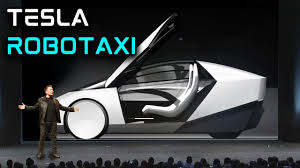
Tesla this week unveiled its first fleet of fully autonomous robotaxis, marking a milestone in the company’s ambition to revolutionize on-demand mobility. Yet behind the fanfare lie a host of complex challenges that threaten to stall Tesla’s rapid expansion plans. From technical limitations to regulatory roadblocks and liability questions, the path from a handful of test vehicles to a mass-market service is fraught with obstacles that could undermine both performance and public confidence.
Operational Scaling Challenges
Tesla’s initial deployment comprises just twenty vehicles in a confined urban district, each monitored by an onboard safety operator and backed by remote support staff. Expanding that pilot into a network of thousands of taxis nationwide will require an exponential increase in computing infrastructure, data centers for continuous machine-learning updates, and skilled personnel to manage system integrity. The company’s camera-only sensor suite depends on neural networks trained on vast troves of driving data—yet diversifying that dataset to cover unpredictable “edge-case” scenarios such as complex construction zones, erratic human drivers, and rare weather events could take years. Furthermore, Tesla must secure reliable high-bandwidth connectivity across its service areas to support real-time decision-making; any network latency or outage could paralyze multiple vehicles at once, eroding customer trust.
Even during closed testing, Tesla’s robotaxis have exhibited hesitation at unmarked intersections and have occasionally drifted into adjacent lanes when interpreting faded road markings. Without traditional radar or lidar, the system’s vision-based approach can struggle in heavy rain, fog, or low-light conditions, raising the risk of collisions. Any serious accident will trigger intense scrutiny of Tesla’s readiness and could prompt insurers to demand higher premiums—or refuse coverage altogether. The question of who bears legal responsibility in the event of a crash further complicates the picture: while Tesla has crafted user agreements to shift liability onto riders who override safety protocols, many jurisdictions do not recognize such clauses for public transportation. Facing potential lawsuits, Tesla may need to allocate substantial reserves for legal defense, draining funds earmarked for expansion.
Regulatory and Public Trust Barriers
Local and federal authorities are still grappling with how to license and police autonomous fleets. Tesla must navigate a patchwork of state regulations—some requiring extensive vehicle inspections and driver-in-the-loop oversight, others banning driverless service outright. Securing permits for new markets can take months of negotiations, during which public pressure groups and taxi unions may lobby against the technology to protect incumbent livelihoods. Early surveys indicate that a significant share of potential riders harbor reservations about riding in a vehicle devoid of any human controller, especially after widely publicized incidents involving self-driving test cars from competitors. To win over skeptical communities, Tesla plans to launch public demonstration events and offer promotional fares, but such outreach efforts may prove costly and slow to shift entrenched perceptions.
Robotaxis must undergo rigorous maintenance schedules to ensure sensor calibration and software integrity. Unlike human-driven fleets, autonomous vehicles require specialized diagnostic tools and certified technicians capable of updating complex AI modules. Tesla must either build out its own network of service centers or partner with existing garages—both options involving significant capital expenditure. Further complicating matters, the company’s electric powertrains rely on fast-charging stations strategically placed along busy corridors; insufficient charging infrastructure risks bottlenecks that could strand vehicles mid-trip and frustrate customers accustomed to traditional rideshare reliability.
Economic Viability and Competitive Pressure
The massive investment needed to solve these issues raises questions about the service’s profitability. Tesla projects that each robotaxi must complete at least 200 trips per week to break even, but early data suggest utilization rates closer to 80 trips weekly. Lower-than-expected demand, coupled with high operating costs for data management, insurance, and maintenance, could force Tesla to raise fares, undermining its competitive edge against established ride-hailing platforms. Moreover, rival firms backed by deep-pocketed tech and auto giants are racing to deploy their own fleets, often with more conservative safety architectures that include redundant sensors. If competitors achieve better reliability or regulatory compliance, Tesla may struggle to capture market share.
While autonomous vehicles promise to reduce dependence on human drivers, they also pose a present-day challenge: retraining redundant employees. Tesla has announced a program to transition laid-off drivers into technician and monitoring roles, but uptake has been limited. Labor advocates warn that insufficient job-placement services could lead to public backlash and demands for stricter labor protections. Additionally, ethical challenges arise around the programming of decision-making algorithms—for instance, how to weigh the safety of passengers versus pedestrians in unavoidable crash scenarios—issues that have yet to be standardized by industry or regulators.
Tesla’s robotaxis constantly collect video and sensor data to refine their AI models, raising concerns over passenger privacy. Regulators in Europe and some U.S. states have stringent data-protection laws that may restrict how long footage can be stored or shared with third parties. Any breach—whether through hacked cameras or compromised communication networks—could expose sensitive user information and erode trust. To mitigate these risks, Tesla needs robust end-to-end encryption, secure data centers, and clear privacy policies, all of which add to development costs and complexity.
Finally, the rapid pace of technological change brings its own dilemma: as next-generation sensors, processors, and AI frameworks emerge, Tesla must decide whether to retrofit existing vehicles or accelerate fleet turnover. Retrofitting can be prohibitively expensive and logistically daunting at scale, while wholesale replacement risks leaving older but functional units idle. Striking the right balance will be crucial to maintaining service continuity without sacrificing innovation.
As Tesla gears up for broader launches in multiple metropolitan areas, the company confronts a mosaic of interrelated challenges. Operational scaling demands, safety validations, regulatory compliance, and public acceptance must all align to secure a viable future for robotaxis. While Tesla’s leadership remains optimistic—citing breakthroughs in neural-network training and strong investor backing—the true test will come when the vehicles begin ferrying everyday commuters in complex, unpredictable real-world environments. In that moment, the breadth and depth of these preparatory efforts will determine whether Tesla’s robotaxis herald a new era of mobility or become another cautionary tale of technology outpacing its readiness.
(Source:www.reuters.com)
Operational Scaling Challenges
Tesla’s initial deployment comprises just twenty vehicles in a confined urban district, each monitored by an onboard safety operator and backed by remote support staff. Expanding that pilot into a network of thousands of taxis nationwide will require an exponential increase in computing infrastructure, data centers for continuous machine-learning updates, and skilled personnel to manage system integrity. The company’s camera-only sensor suite depends on neural networks trained on vast troves of driving data—yet diversifying that dataset to cover unpredictable “edge-case” scenarios such as complex construction zones, erratic human drivers, and rare weather events could take years. Furthermore, Tesla must secure reliable high-bandwidth connectivity across its service areas to support real-time decision-making; any network latency or outage could paralyze multiple vehicles at once, eroding customer trust.
Even during closed testing, Tesla’s robotaxis have exhibited hesitation at unmarked intersections and have occasionally drifted into adjacent lanes when interpreting faded road markings. Without traditional radar or lidar, the system’s vision-based approach can struggle in heavy rain, fog, or low-light conditions, raising the risk of collisions. Any serious accident will trigger intense scrutiny of Tesla’s readiness and could prompt insurers to demand higher premiums—or refuse coverage altogether. The question of who bears legal responsibility in the event of a crash further complicates the picture: while Tesla has crafted user agreements to shift liability onto riders who override safety protocols, many jurisdictions do not recognize such clauses for public transportation. Facing potential lawsuits, Tesla may need to allocate substantial reserves for legal defense, draining funds earmarked for expansion.
Regulatory and Public Trust Barriers
Local and federal authorities are still grappling with how to license and police autonomous fleets. Tesla must navigate a patchwork of state regulations—some requiring extensive vehicle inspections and driver-in-the-loop oversight, others banning driverless service outright. Securing permits for new markets can take months of negotiations, during which public pressure groups and taxi unions may lobby against the technology to protect incumbent livelihoods. Early surveys indicate that a significant share of potential riders harbor reservations about riding in a vehicle devoid of any human controller, especially after widely publicized incidents involving self-driving test cars from competitors. To win over skeptical communities, Tesla plans to launch public demonstration events and offer promotional fares, but such outreach efforts may prove costly and slow to shift entrenched perceptions.
Robotaxis must undergo rigorous maintenance schedules to ensure sensor calibration and software integrity. Unlike human-driven fleets, autonomous vehicles require specialized diagnostic tools and certified technicians capable of updating complex AI modules. Tesla must either build out its own network of service centers or partner with existing garages—both options involving significant capital expenditure. Further complicating matters, the company’s electric powertrains rely on fast-charging stations strategically placed along busy corridors; insufficient charging infrastructure risks bottlenecks that could strand vehicles mid-trip and frustrate customers accustomed to traditional rideshare reliability.
Economic Viability and Competitive Pressure
The massive investment needed to solve these issues raises questions about the service’s profitability. Tesla projects that each robotaxi must complete at least 200 trips per week to break even, but early data suggest utilization rates closer to 80 trips weekly. Lower-than-expected demand, coupled with high operating costs for data management, insurance, and maintenance, could force Tesla to raise fares, undermining its competitive edge against established ride-hailing platforms. Moreover, rival firms backed by deep-pocketed tech and auto giants are racing to deploy their own fleets, often with more conservative safety architectures that include redundant sensors. If competitors achieve better reliability or regulatory compliance, Tesla may struggle to capture market share.
While autonomous vehicles promise to reduce dependence on human drivers, they also pose a present-day challenge: retraining redundant employees. Tesla has announced a program to transition laid-off drivers into technician and monitoring roles, but uptake has been limited. Labor advocates warn that insufficient job-placement services could lead to public backlash and demands for stricter labor protections. Additionally, ethical challenges arise around the programming of decision-making algorithms—for instance, how to weigh the safety of passengers versus pedestrians in unavoidable crash scenarios—issues that have yet to be standardized by industry or regulators.
Tesla’s robotaxis constantly collect video and sensor data to refine their AI models, raising concerns over passenger privacy. Regulators in Europe and some U.S. states have stringent data-protection laws that may restrict how long footage can be stored or shared with third parties. Any breach—whether through hacked cameras or compromised communication networks—could expose sensitive user information and erode trust. To mitigate these risks, Tesla needs robust end-to-end encryption, secure data centers, and clear privacy policies, all of which add to development costs and complexity.
Finally, the rapid pace of technological change brings its own dilemma: as next-generation sensors, processors, and AI frameworks emerge, Tesla must decide whether to retrofit existing vehicles or accelerate fleet turnover. Retrofitting can be prohibitively expensive and logistically daunting at scale, while wholesale replacement risks leaving older but functional units idle. Striking the right balance will be crucial to maintaining service continuity without sacrificing innovation.
As Tesla gears up for broader launches in multiple metropolitan areas, the company confronts a mosaic of interrelated challenges. Operational scaling demands, safety validations, regulatory compliance, and public acceptance must all align to secure a viable future for robotaxis. While Tesla’s leadership remains optimistic—citing breakthroughs in neural-network training and strong investor backing—the true test will come when the vehicles begin ferrying everyday commuters in complex, unpredictable real-world environments. In that moment, the breadth and depth of these preparatory efforts will determine whether Tesla’s robotaxis herald a new era of mobility or become another cautionary tale of technology outpacing its readiness.
(Source:www.reuters.com)














